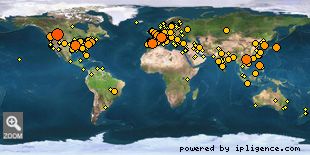 » NMR Jobs
» NMR Jobs |
|
|
|
|
|
|
 » Cool papers
» Cool papers |
|
|
|
|
|
|
 » NMR books
» NMR books |
|
|
|
|
|
|
 » NMR theses
» NMR theses |
|
|
|
|
|
|
 » NMR blogs
» NMR blogs |
|
|
|
|
|
|
 » NMR news
» NMR news |
|
|
|
|
|
|
 » NMR tweets
» NMR tweets |
|
|
|
|
|
|
 » NMR videos
» NMR videos |
|
|
|
|
|
|
 » NMR pictures
» NMR pictures |
|
|
|
|
|
|
 » Online Users: 227
» Online Users: 227 |
| 0 members and 227 guests |
| No Members online |
| Most users ever online was 1,278, 01-09-2024 at 07:38 AM. |
|
 » Welcome!
» Welcome! |
Welcome, NMR world!

Our visitors map.
|

 Efficient and economic protein labeling for NMR in mammalian expression systems: Application to a preT-cell and T-cell receptor protein Efficient and economic protein labeling for NMR in mammalian expression systems: Application to a preT-cell and T-cell receptor protein |
|
Mar 24, 2024 - 6:32 AM - by nmrlearner
|
 Efficient and economic protein labeling for NMR in mammalian expression systems: Application to a preT-cell and T-cell receptor protein
Efficient and economic protein labeling for NMR in mammalian expression systems: Application to a preT-cell and T-cell receptor protein
Abstract
Protein nuclear magnetic resonance*(NMR) spectroscopy relies on the ability to isotopically label polypeptides, which is achieved through heterologous expression in various host organisms. Most commonly, Escherichia coli is employed by leveraging isotopically substituted ammonium and glucose to uniformly label proteins with 15N and 13C, respectively. Moreover, E. coli can grow and express proteins in uniformly deuterium-substituted water (D2O), a strategy useful for experiments targeting high molecular weight proteins. Unfortunately, many proteins, particularly those requiring specific posttranslational modifications like disulfide bonding or glycosylation for proper folding and/or function, cannot be readily expressed in their functional forms using E. coli-based expression systems. One such class of proteins includes T-cell receptors and their related preT-cell receptors. In this study, we present an expression system for isotopic labeling of proteins using a nonadherent human embryonic kidney cell line, Expi293F, and a specially designed media. We demonstrate the application of this platform to the ? subunit common to both receptors. In addition, we show that this expression system and media can be used to specifically label amino acids Phe, Ile, Val, and Leu in this system, utilizing an amino acid-specific labeling protocol that allows targeted incorporation at high efficiency without significant isotopic scrambling. We demonstrate that this system can also be used to express proteins with fluorinated amino acids. We were routinely able to obtain an NMR... [Read More]
|

 0 Replies | 58 Views
0 Replies | 58 Views
|

 Xplor-NIH: Better parameters and protocols for NMR protein structure determination Xplor-NIH: Better parameters and protocols for NMR protein structure determination |
|
Mar 24, 2024 - 6:32 AM - by nmrlearner
|
 Xplor-NIH: Better parameters and protocols for NMR protein structure determination
Xplor-NIH: Better parameters and protocols for NMR protein structure determination
Abstract
The present work describes an update to the protein covalent geometry and atomic radii parameters in the Xplor-NIH biomolecular structure determination package. In combination with an improved treatment of selected non-bonded interactions between atoms three bonds apart, such as those involving methyl hydrogens, and a previously developed term that affects the system's gyration volume, the new parameters are tested using structure calculations on 30 proteins with restraints derived from nuclear magnetic resonance data. Using modern structure validation criteria, including several formally adopted by the Protein Data Bank, and a clear measure of structural accuracy, the results show superior performance relative to previous Xplor-NIH implementations. Additionally, the Xplor-NIH structures compare favorably against originally determined NMR models.
More...
|

 0 Replies | 67 Views
0 Replies | 67 Views
|
|
 » BioNMR wiki
» BioNMR wiki |
|
|
|
|
|
|
 » NMR discussion
» NMR discussion |
|
|
|
|
|
|
 » NMR conferences
» NMR conferences |
|
|
|
|
|
|
 » NMR software
» NMR software |
|
|
|
|
|
|
 » Pulse sequences
» Pulse sequences |
|
|
|
|
|
|
 » NMR community
» NMR community |
|
|
|
|
|
|
 » NMR presentations
» NMR presentations |
|
|
 » NMR web resources
» NMR web resources |
|
|
|
|
|
|
 » NMR feature requests
» NMR feature requests |
|
|
 » NMR bookmarks
» NMR bookmarks |
|
|
|
|
|
|
 » Stats
» Stats |
Members: 3,202
Threads: 25,730
Posts: 26,116
Top Poster: nmrlearner (23,174)
|
| Welcome to our newest member, bpadmanabhan |
|



